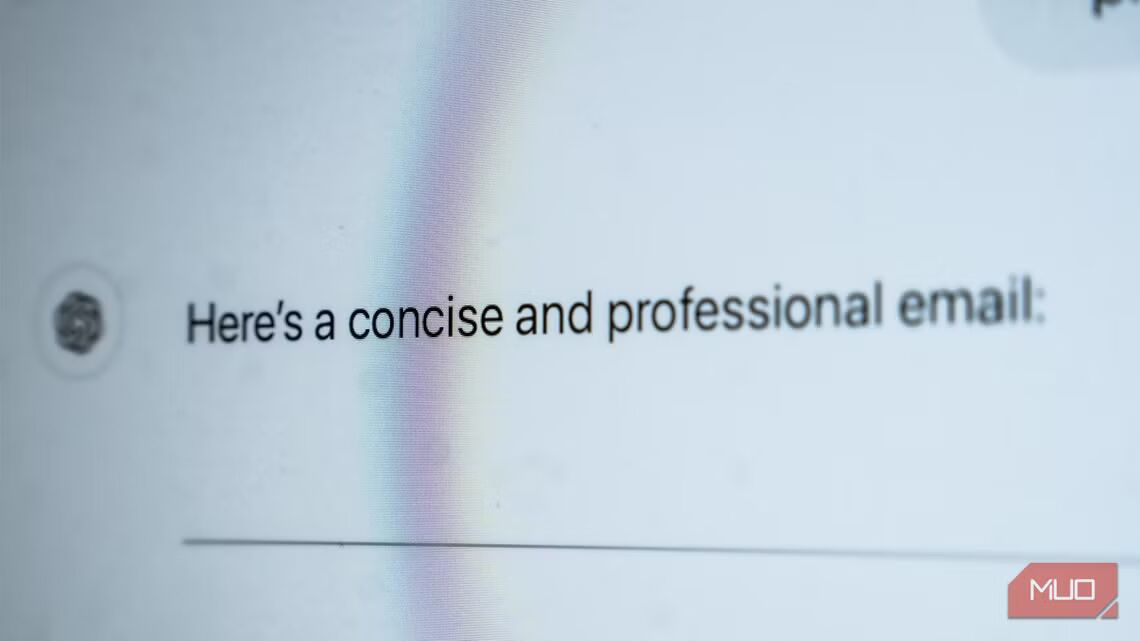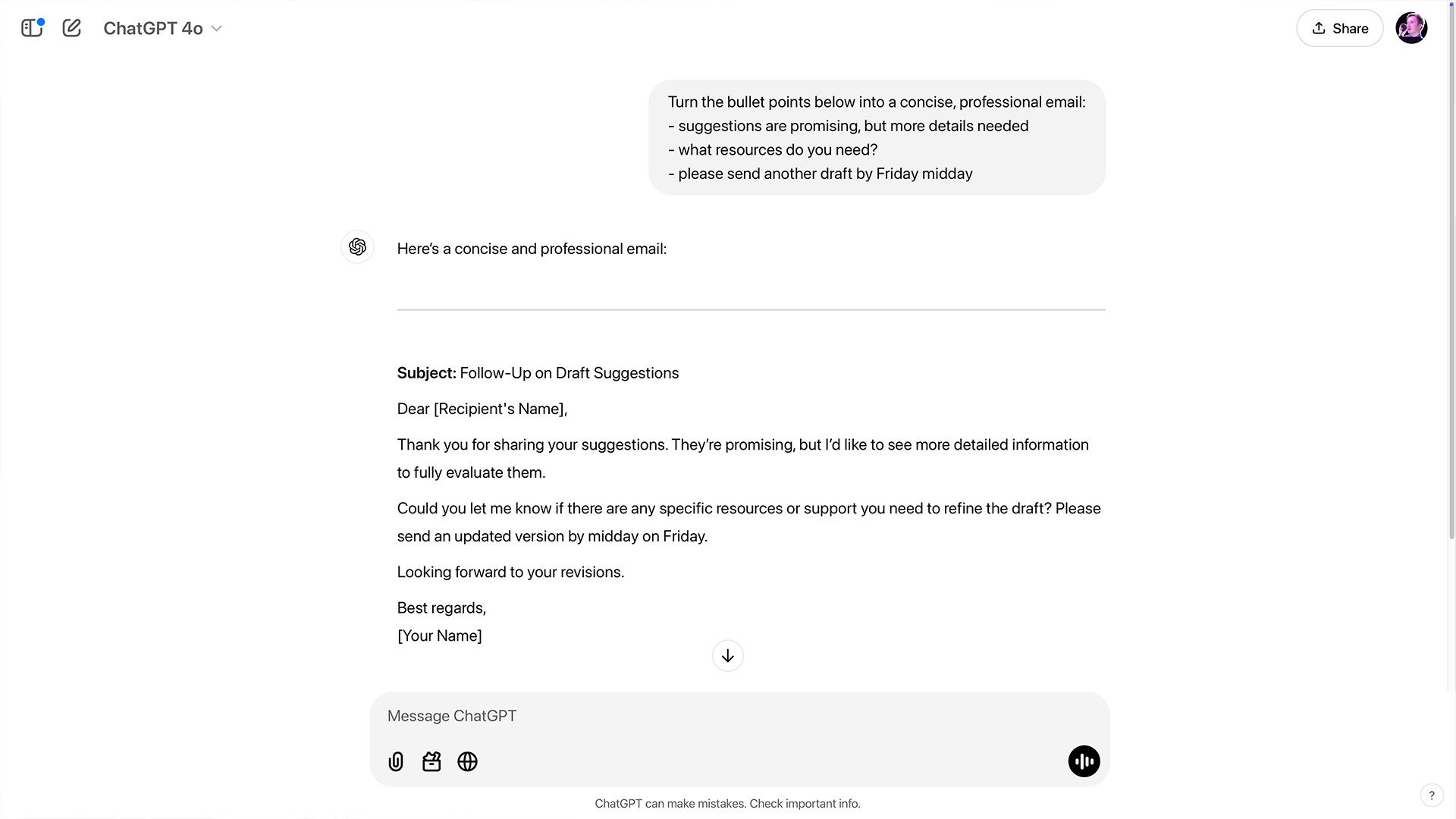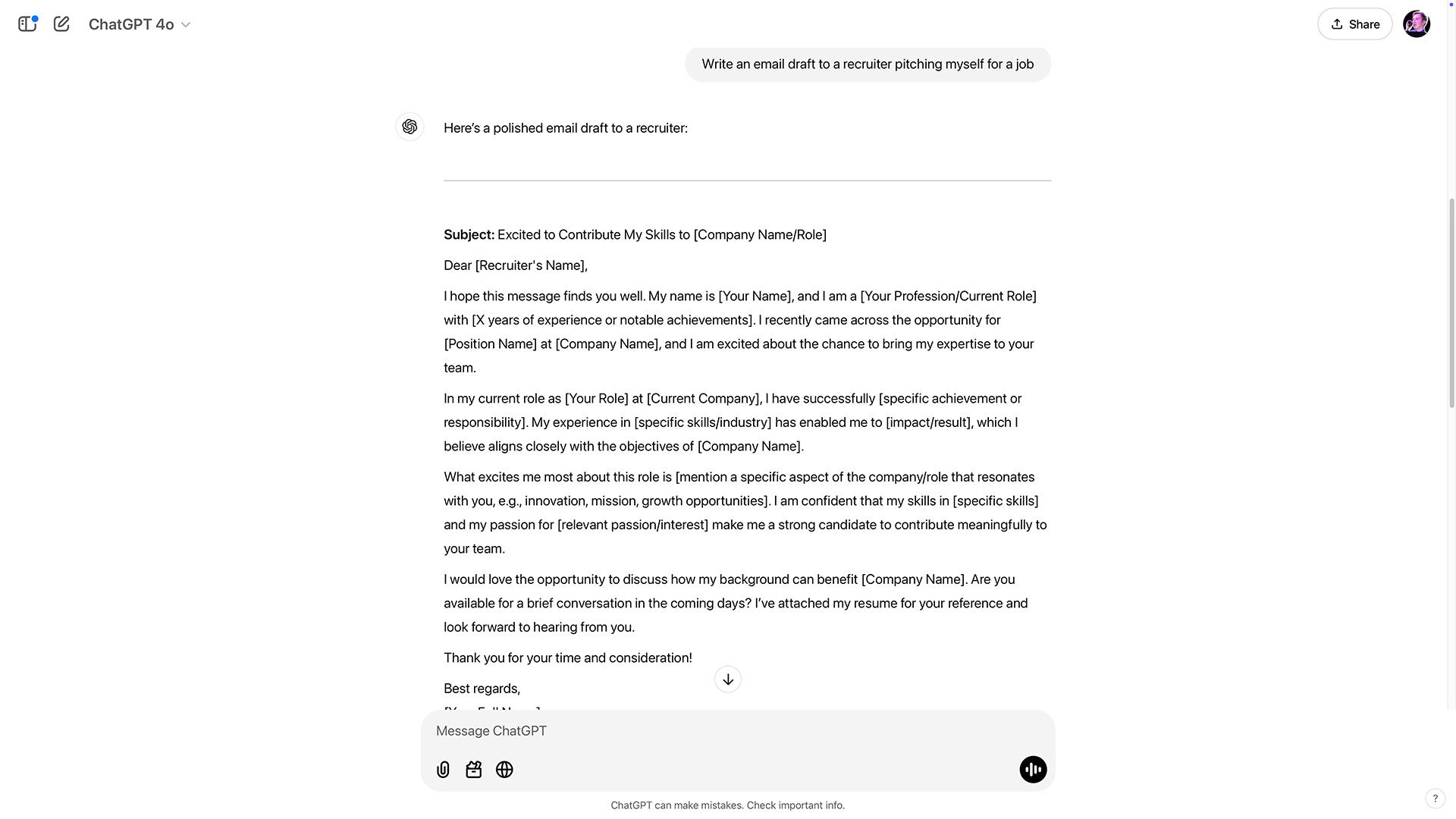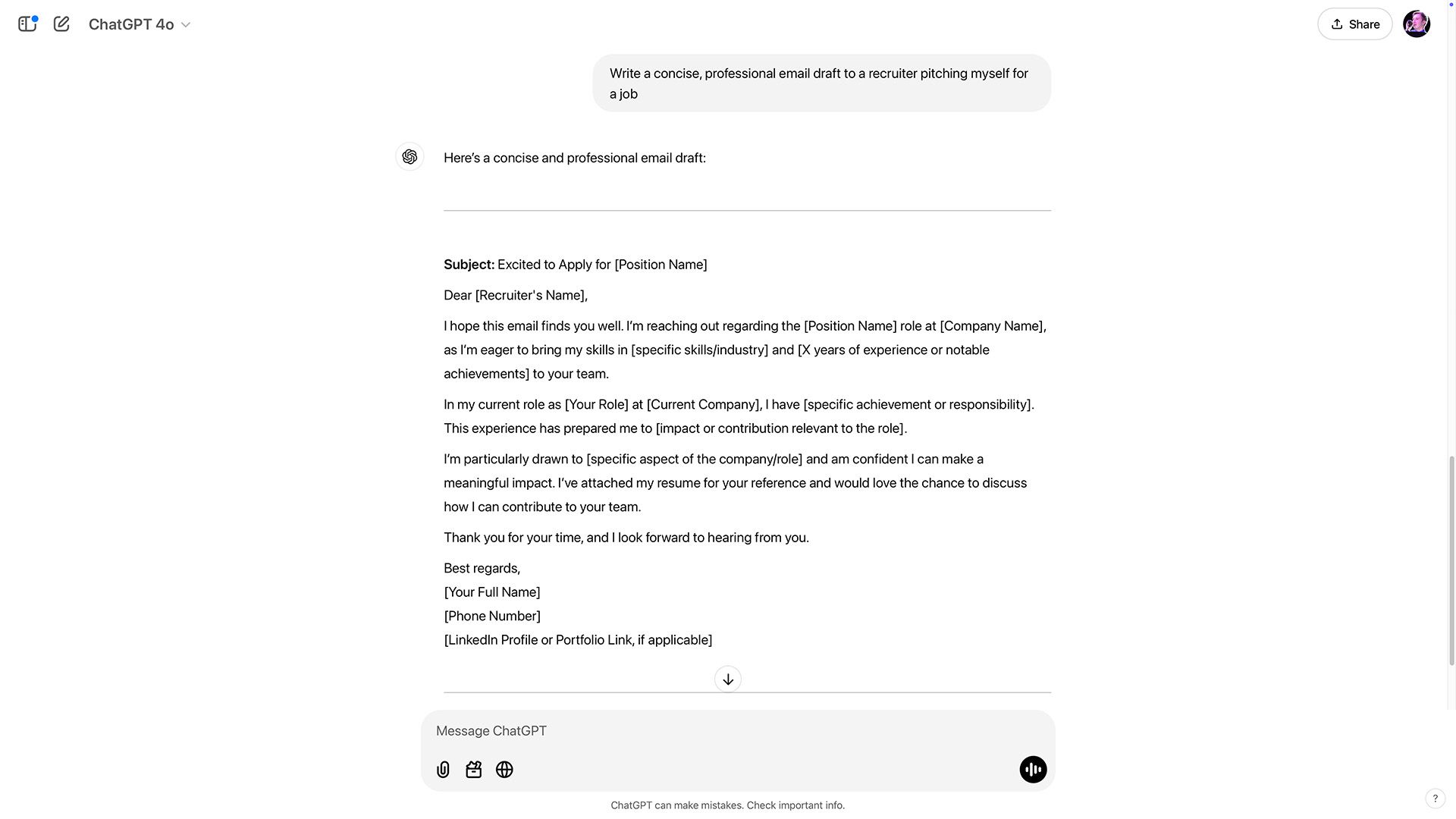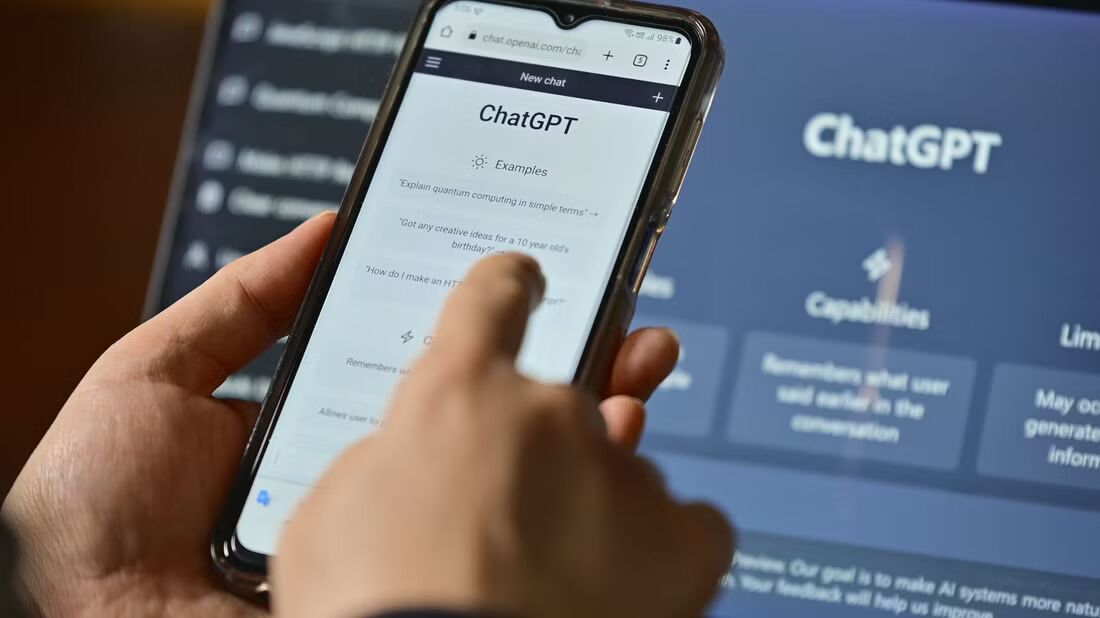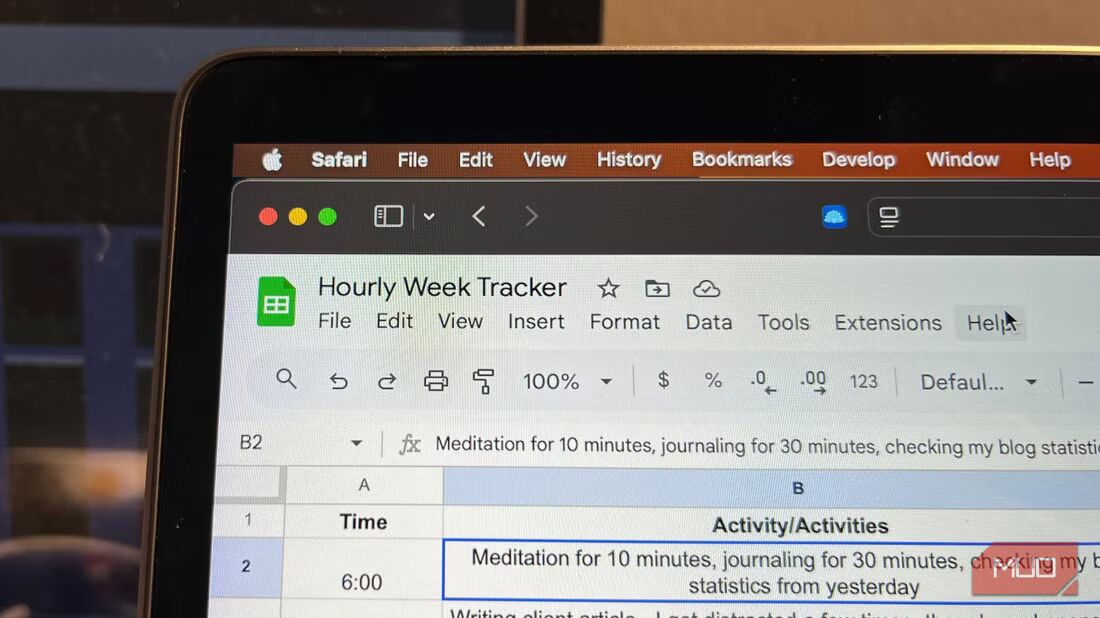AI can help you draft emails in seconds, but that doesn’t mean you should always use it. Some emails benefit from automation, while others demand a human touch. Knowing when to let AI take the reins—and when to type it yourself—can make all the difference.
1AI Is Probably Fine for Simple Emails
For emails on the simpler side, such as quick logistical messages, AI is almost certainly fine to use to write your reply. If creativity and critical thinking aren’t required in your writing, using AI probably won’t hurt your output.
For example, you might try a simple prompt such as “Write a concise, professional reply to the email pasted below and suggest a meeting at 11 AM” when coordinating a simple meeting.
2AI Can Help if You Receive Too Many Emails
Your email inbox might be full of questions from your colleagues, and you likely need to reply to all of these. While I generally suggest avoiding AI for anything that requires originality, using AI as a supplementary tool when drafting responses can ease your writing burden.
For example, you might write your response in bullet points, then prompt ChatGPT to turn those points into a cohesive email.
On that note, AI can also help you read your excess email. In Outlook, Copilot has several tools for going through email quickly, and numerous other AI tools like Grammarly and Sanebox can help you manage your inbox as well.
3AI Can Refine Your Writing, Too
Otherwise, if you’re ever stuck writing an email, AI tools like ChatGPT can help supplement your thinking and drafting. You might paste a draft of your email and ask for revisions, brainstorm additional ideas, or rewrite the email in a more professional style.
Using AI tools in this way doesn’t replace your own original ideas, but it can help you refine them.
4Don’t Use AI When You Need Creativity and Critical Thinking
On that note of originality, AI is generally not best used when your own creativity and critical thinking are required. Pasting an email you received and asking ChatGPT to write a response can be helpful in simple communications, but when you need to provide meaningful input on something, delegating to AI is generally unwise.
Your manager, coworker, or friend probably wants to know what you think, not what ChatGPT thinks. AI can still be helpful as a supplementary tool, but it can’t replace your creativity.
5Avoid AI if You Don’t Have Time to Edit the Output
AI language models tend to produce wordy, repetitive output. Unless you’re a wizard at prompt engineering or provide heaps of details in your prompt for a better output, you should edit ChatGPT’s output in nearly every case. Blaise Pascal famously said, “If I had more time, I would have written a shorter letter,” and the same applies to AI writing.
If you’ve noticed, in addition to suggesting editing, all the example prompts I created include the word “concise” somewhere in them. See the difference that a small bit of prompt engineering makes below, with the same prompt requested in a normal and “concise” version.
Even then, the concise version is still quite generic, even as a basic fill-in-the-blank email. It needs significant edits for more originality and conciseness.
Similarly, if your organization uses AI-checking tools or otherwise forbids AI usage, you may want to avoid using AI entirely. That said, you might be flagged with a false positive for AI usage for several reasons,even if you didn’t use it.
6AI Can Be Disrespectful
When you use AI to write emails, what may take you seconds to prompt can take the recipient minutes to read. I’ve had colleagues at other workplaces clearly use generative AI when writing emails. I was incredibly frustrated with the lengthy, dithering text I received, knowing I likely spent more time reading the email than they did writing.
AI tools can help you leverage your time for greater output but don’t forget to respect other people’s time when using ChatGPT to write.
Here’s a rule of thumb when considering using AI for emails and other communications: am I disrespecting someone else’s time by using AI?
AI probably isn’t disrespecting the recipient’s time at all for writing simple emails, fleshing out outlines, or using it as a supplementary writing tool. However, if you use AI because you can’t be bothered to write a coherent response, you probably shouldn’t be using AI. Sometimes, it’s better to say nothing at all.
